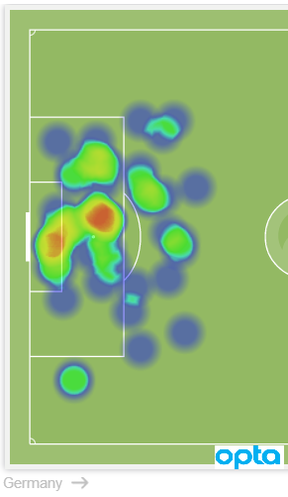Football, or soccer as it’s known in some regions, is more than just a game; it is a multi-billion-dollar industry that attracts global attention. Within this industry, football clubs operate within a unique economic framework influenced by various factors, including player transfers, sponsorship deals, ticket sales, and broadcasting rights. This article delves into the economics of running a football club, taking Al Nassr, one of Saudi Arabia’s premier football clubs, as a case study to illustrate the intricate financial dynamics at play.
Overview of Al Nassr Football Club

Founded in 1955, Al Nassr is based in Riyadh and has a rich history in Saudi Arabian football. With numerous domestic league titles and cup victories, the club has established itself as a powerhouse in the region. In recent years, Al Nassr has gained international attention, particularly after signing high-profile players, which has enhanced its marketability and revenue potential.
Revenue Streams of Al Nassr
The financial health of a football club largely depends on its ability to generate revenue from various sources. Al Nassr’s revenue streams can be segmented into the following categories:
- Matchday Revenue: This includes ticket sales, merchandise sold on match days, and concessions.
- Broadcasting Rights: Revenue from television networks that pay for the rights to broadcast matches.
- Sponsorship and Advertising: Income from corporate sponsors and advertisers who want to associate their brands with the club.
- Player Transfers: Profits generated from buying and selling players.
- Merchandising: Sales of club-related merchandise, including jerseys, scarves, and other memorabilia.
Matchday Revenue: The Heartbeat of Club Finances
Matchday revenue is crucial for any football club, providing direct income through ticket sales and associated sales at the stadium. For Al Nassr, with its large fan base, the potential for matchday revenue is significant. The club’s stadium, Mrsool Park, has a capacity of around 25,000 seats, and sold-out matches can generate substantial income.
For instance, if ticket prices average $20 and the stadium is sold out, a single match could generate $500,000 in ticket sales alone. When factoring in additional revenue from concessions and merchandise, matchday revenue can contribute millions annually.
Broadcasting Rights: A Growing Revenue Stream

The rise of digital broadcasting has transformed how football clubs generate revenue. Al Nassr, participating in the Saudi Professional League, benefits from domestic broadcasting rights. Additionally, as the global interest in Saudi football rises, international broadcasting agreements have become increasingly lucrative.
In 2021, the Saudi Pro League signed a significant broadcasting deal that promised to enhance the financial stability of clubs like Al Nassr. This agreement is expected to increase revenue by millions, providing clubs with more resources to invest in players and facilities.
Sponsorship and Advertising: Building Brand Partnerships
Sponsorship deals are critical for clubs, providing financial backing in exchange for brand visibility. Al Nassr has secured sponsorships with various companies, which significantly bolster its finances. For instance:
- Kit Sponsorship: The club’s kit sponsor pays a fee for the right to have its logo displayed on team jerseys.
- Stadium Naming Rights: Companies often pay to have their names associated with the stadium, providing exposure during matches and events.
In recent years, Al Nassr has successfully attracted high-profile sponsors, which has contributed to its financial stability and growth. The club’s visibility on international platforms, particularly following the signing of notable players, has made it an attractive proposition for sponsors looking to penetrate the Middle Eastern market.
Player Transfers: The Double-Edged Sword
Player transfers are a critical aspect of football economics. Clubs engage in buying and selling players to strengthen their teams or generate profit. Al Nassr has been active in the transfer market, notably making headlines with high-profile signings like Cristiano Ronaldo in 2023.
While signing established stars can attract fans and increase merchandise sales, it comes with significant financial implications:
- Transfer Fees: The initial cost of acquiring a player can be substantial, often running into millions.
- Wages: High-profile players command high salaries, which can strain a club’s budget if not managed correctly.
- Resale Value: If a player is sold for a profit, it can significantly impact the club’s finances positively.
For instance, Al Nassr’s acquisition of Cristiano Ronaldo not only brought an influx of fans but also increased their merchandising sales exponentially, demonstrating the potential financial benefits of such investments.
Merchandising: Tapping into Fan Loyalty
Merchandising is another vital revenue stream for football clubs. The sale of jerseys, hats, and other memorabilia allows fans to express their loyalty while providing clubs with significant income. Al Nassr has capitalized on its growing popularity by expanding its merchandise offerings.
With the rise of e-commerce, fans from around the world can purchase Al Nassr merchandise online, contributing to a broader customer base. This has proven particularly effective after high-profile signings, where merchandise sales can see a significant spike.
The Financial Challenges and Sustainability

While the revenue streams for Al Nassr appear promising, running a football club comes with inherent economic challenges. Financial sustainability is a critical concern, particularly as clubs navigate complex financial landscapes. Key challenges include:
- Debt Management: Clubs can easily accrue debt due to high transfer fees and player wages, making financial management crucial.
- Economic Fluctuations: Changes in the economy can impact sponsorship and ticket sales, and clubs need to be adaptable.
- Regulatory Compliance: Adhering to financial fair play regulations is essential, as overspending can lead to penalties.
Al Nassr, like many clubs, must balance ambition with financial prudence, ensuring that investments lead to sustainable growth rather than financial strain.
Conclusion: Key Takeaways on the Economics of Football Clubs
In conclusion, the economics of running a football club like Al Nassr involves a complex interplay of various revenue streams, financial management, and strategic decision-making. The club’s ability to generate income from matchday sales, broadcasting rights, sponsorships, and merchandising is vital for its operations and growth.
However, the football landscape is fraught with challenges, including managing high costs associated with player transfers and wages, ensuring financial sustainability, and adapting to economic changes. As Al Nassr continues to evolve, its financial strategies will be crucial in maintaining its status as a leading football club in Saudi Arabia and beyond.
Ultimately, the case of Al Nassr serves as a microcosm of the broader football industry, reflecting the opportunities and challenges that clubs face in an increasingly competitive and commercialized environment.
